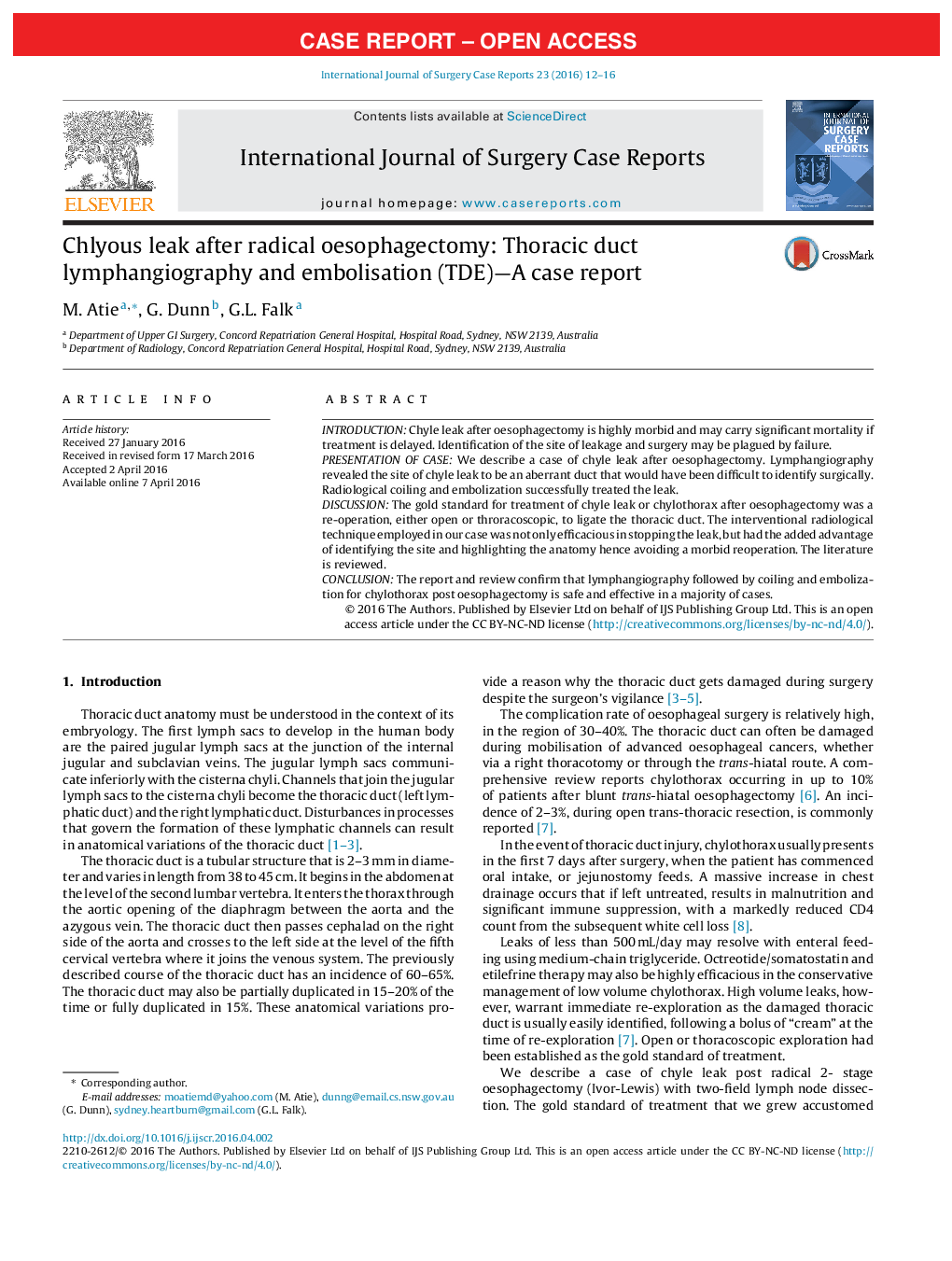| کد مقاله | کد نشریه | سال انتشار | مقاله انگلیسی | نسخه تمام متن |
|---|---|---|---|---|
| 4288490 | 1612091 | 2016 | 5 صفحه PDF | دانلود رایگان |

• An unrecognised iatrogenic thoracic duct chyle leak carries significant morbidity and mortality.
• A case of chylothorax post oesophagectomy, treated by interventional radiology, is described.
• Lymphangiography identified aberrant thoracic ductal anatomy.
• Coiling and embolization following ductal injury is safe, effective and less morbid procedure.
IntroductionChyle leak after oesophagectomy is highly morbid and may carry significant mortality if treatment is delayed. Identification of the site of leakage and surgery may be plagued by failure.Presentation of caseWe describe a case of chyle leak after oesophagectomy. Lymphangiography revealed the site of chyle leak to be an aberrant duct that would have been difficult to identify surgically. Radiological coiling and embolization successfully treated the leak.DiscussionThe gold standard for treatment of chyle leak or chylothorax after oesophagectomy was a re-operation, either open or throracoscopic, to ligate the thoracic duct. The interventional radiological technique employed in our case was not only efficacious in stopping the leak, but had the added advantage of identifying the site and highlighting the anatomy hence avoiding a morbid reoperation. The literature is reviewed.ConclusionThe report and review confirm that lymphangiography followed by coiling and embolization for chylothorax post oesophagectomy is safe and effective in a majority of cases.
Journal: International Journal of Surgery Case Reports - Volume 23, 2016, Pages 12–16